Hand washing is one of the most effective ways to reduce food safety risk on a farm because hands touch fresh produce and food contact surfaces during harvest, washing, packing, etc.
Providing proper hand washing instructions and easy access to hand washing stations encourages farm employees to keep their hands clean.
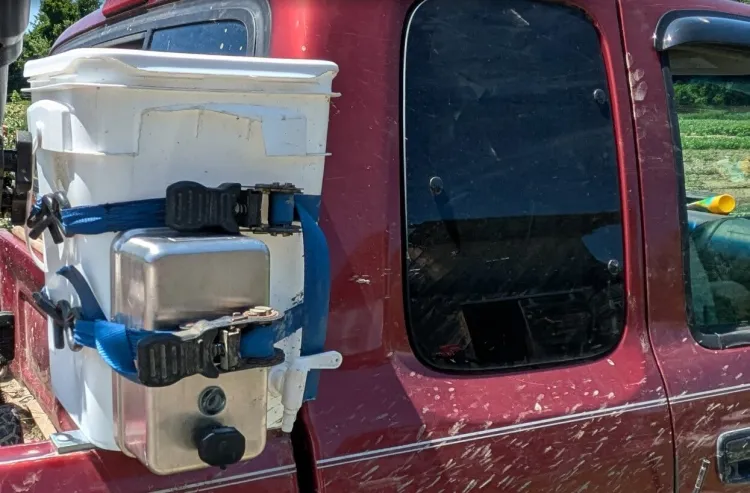
Design Goals
- Water provided for washing hands is always clean (potable).
- Water is poured and drains so as to avoid cross contamination from hands, or from flow into crop fields.
- The station is self-contained, with water tank or plumbing, hand soap, paper towels, wastepaper basket, and grey water collection or discharge.
- The station is easy to clean.
- The station is easy and convenient to access. If needed, the station is mobile so it can move to where people need to wash their hands.
Design Elements
- Water tank (or plumbing) is made of smooth, non-porous food-grade materials.
- Water flow has mechanical control that is foot-operated to avoid hand contact. A one-hand stay-on valve (1/4 turn) can be used. A manual pour spout is not ideal because it requires a lot of hand contact.
- Waterspout height is comfortable for most people, typically 36 inches above the floor.
- Grey water goes into a bucket or drain to prevent cross-contamination, puddles, or mud.
- Hand soap is dispensed by a pump to reduce mess, cross-contamination risk, and clean up time versus bar soap.
- Paper towels are dispensed from a waterproof container. Avoid cloth towels as they can increase cross-contamination risk.
- Wastepaper is collected in a durable bag or removable, cleanable container.
- Mobile stations are easy to move, set up, and maintain.
- Waterproof storage for supplies (paper towels, soap) is in a cabinet with a door under the sink.
- Handwashing instructions are posted near or attached to the handwashing station.
Benefits
- Hand washing can prevent the spread of human pathogens from hands to raw-eaten crops.
- Providing convenient hand washing close to farm activities (harvest, washing, packing) can save time and reduce labor costs compared to hand washing at a more distant location.
- Increase hand washing compliance. Convenient and comfortable equipment supports a culture of personal hygiene among farm employees.
Photos
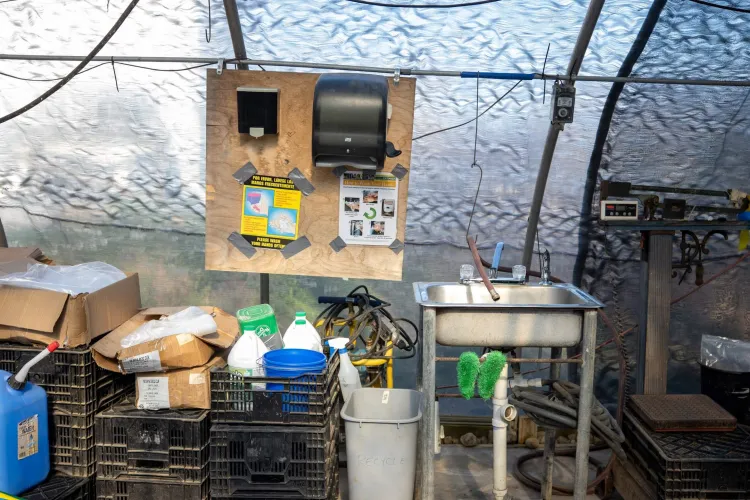
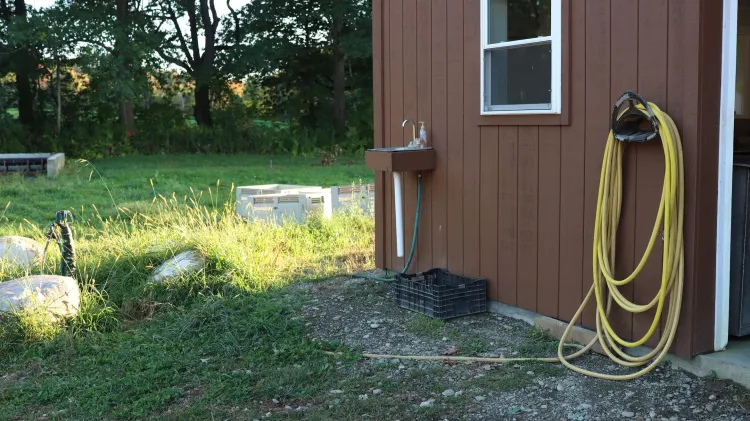
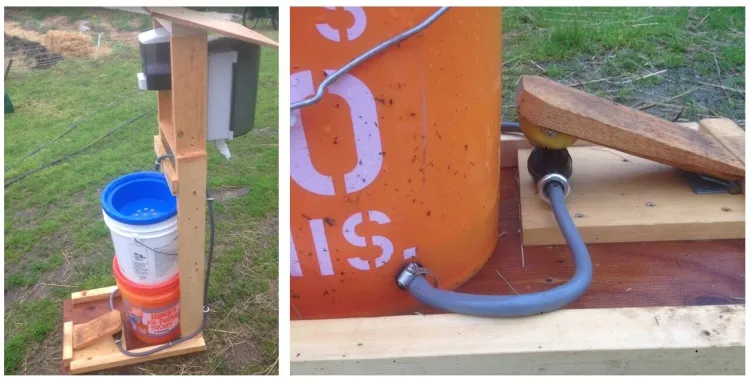
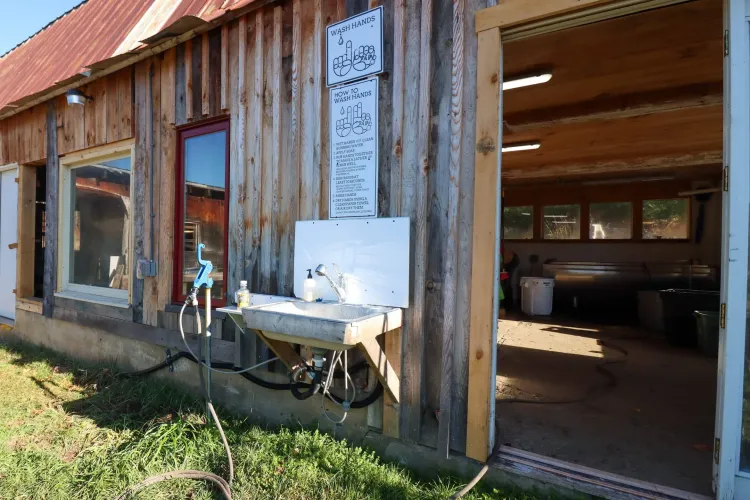
Authors: Hans Estrin and Vern Grubinger, UVM Extension
This work is supported by the Food Safety Outreach Program Name, project award no. 2023-70020-40688, from the U.S. Department of Agriculture’s National Institute of Food and Agriculture. Any opinions, findings, conclusions, or recommendations expressed in this publication are those of the author(s) and should not be construed to represent any official USDA or U.S. Government determination or policy.
